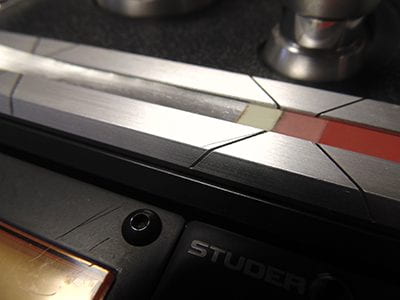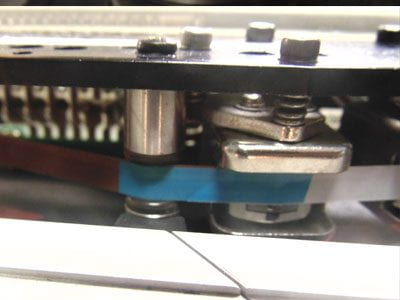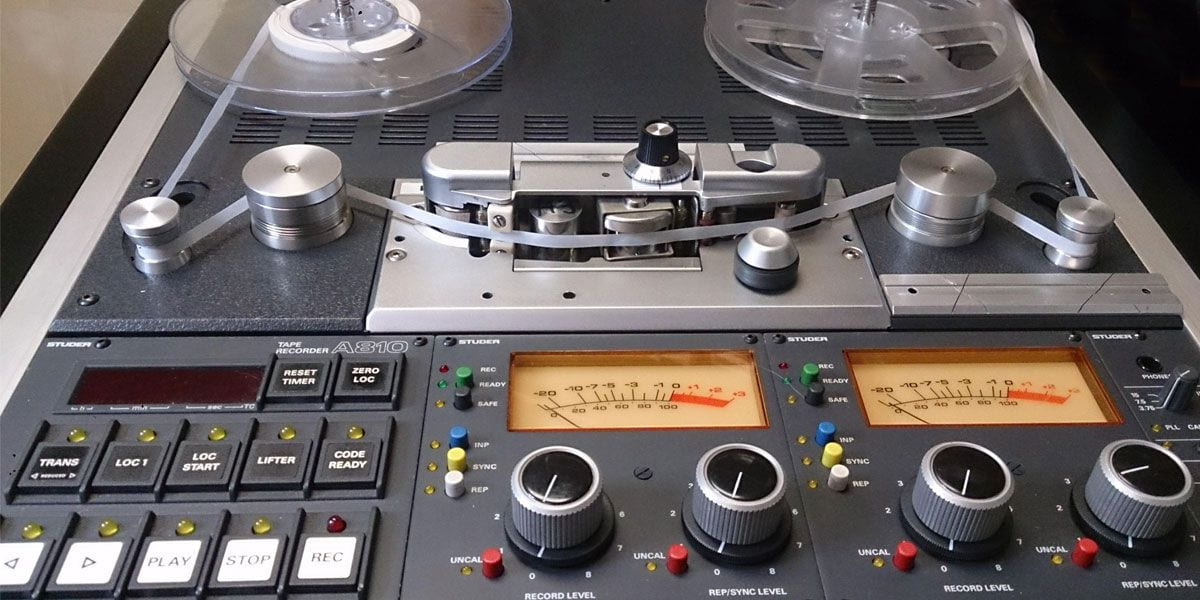This summer, we’re taking you behind the scenes to see the work that goes into caring for our Cultural Collections and giving you access to them. This is the last of four stories.
Replacing tape splices on reel-to-reel magnetic tapes is a fiddly task that is done several times a day in the Archive of Māori and Pacific Sound (AMPS). It is a critical part of triaging thousands of rare recordings in AMPS and helps prepare them for preservation and digitisation so they can be digitally accessed by researchers.
Most of the old reels dating from the 1950s to the late-1990s contain several splices – at the beginning or end where the blank leader tape joins the magnetic recording tape, and where the tape was cut and rejoined during editing. Unfortunately, the glue that was often used to attach the splicing tape to the joins can deteriorate and leach through to the magnetic tape layer, causing permanent damage.

Tape sitting in the splicing block showing several old splices
Crucial step
Replacing these old splices with archival tape is a crucial step in the conservation process, as is replacing the plastic, static electricity-prone leader tape with an acid-free paper alternative. To do this, we carefully lift and remove the splice and leader with a razor blade and use lighter fluid containing Naptha to gently clean the glue residue off the tape’s magnetic and backing layers. The cleaned tape ends are placed on a splicing block and bumped up to meet as closely as possible, the archival splicing tape is placed in line to cover both sides of the join and pressed firmly so that it sticks.
This is sometimes just the first of several steps required to stabilise and preserve the original recordings in preparation for digital copying and delivery.

Repaired tape back in operation
AMPS turns 50 and we are celebrating
Watch out for details of a programme of activities this year to celebrate the 50th anniversary of the Archive, which was established in 1970 under the Department of Anthropology.
Visit the Archive of Māori and Pacific Sound website
Marie O’Connell, Team Leader, Archive of Māori and Pacific Sound

